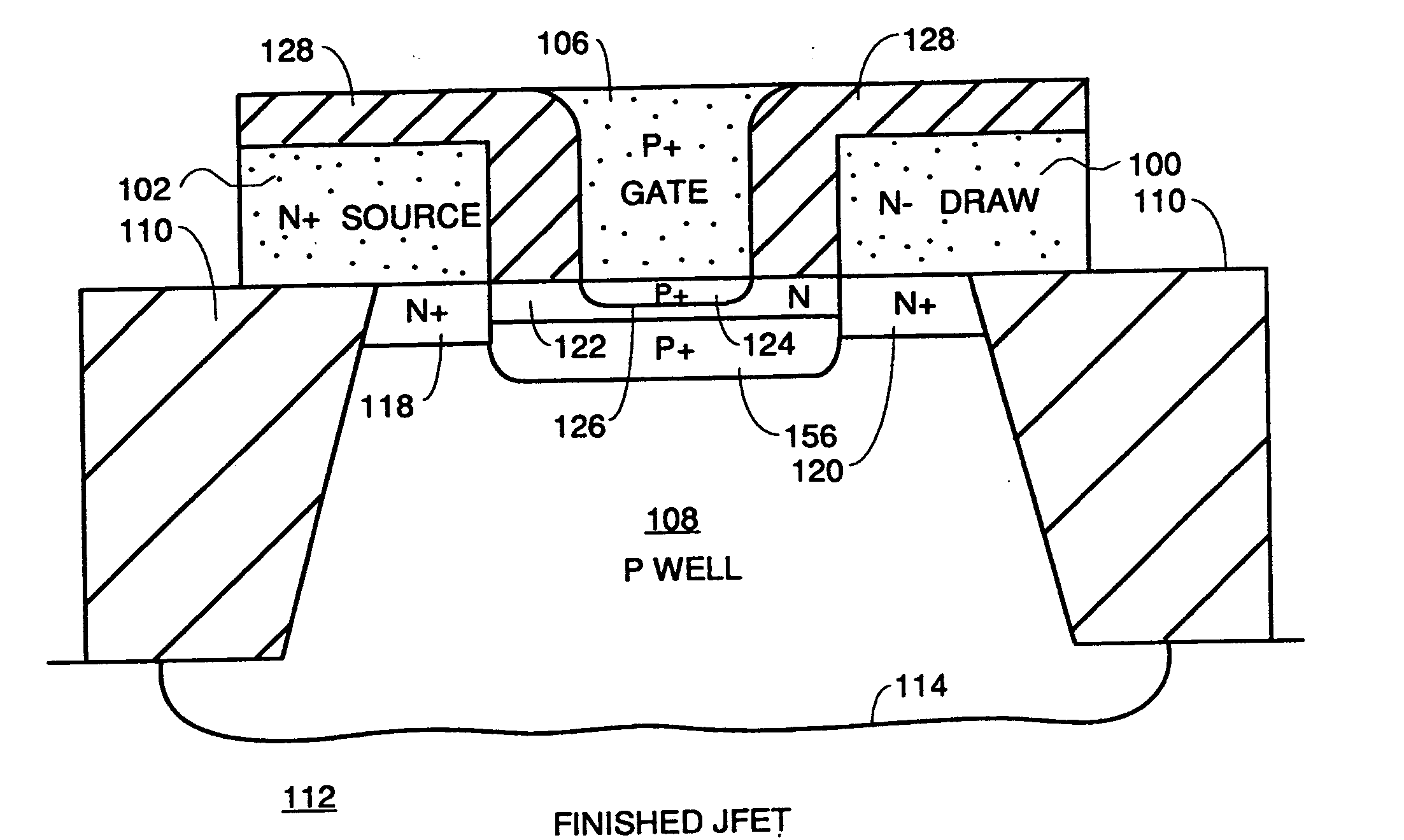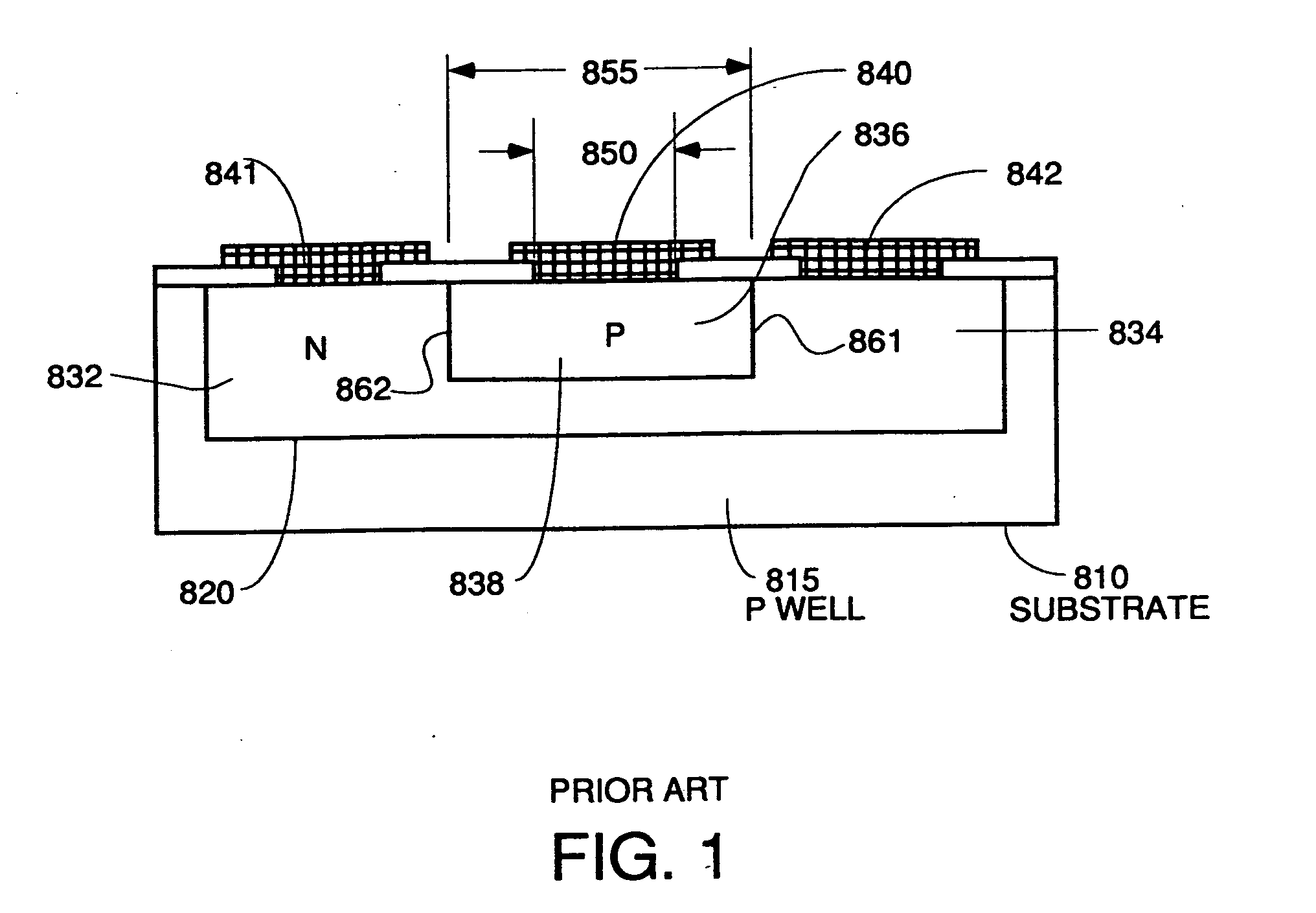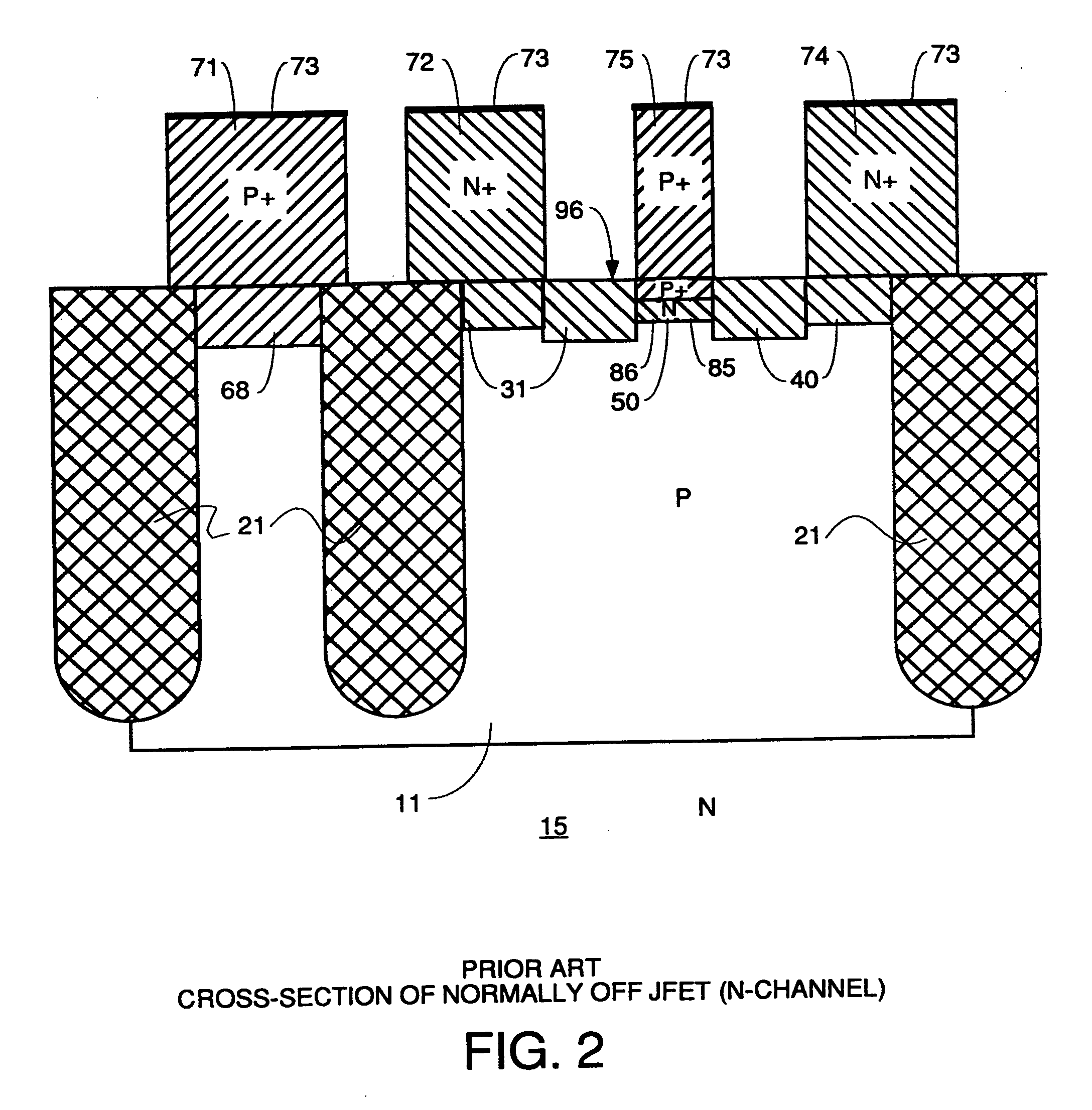Self aligned gate JFET structure and method
- Summary
- Abstract
- Description
- Claims
- Application Information
AI Technical Summary
Benefits of technology
Problems solved by technology
Method used
Image
Examples
Embodiment Construction
[0045]FIG. 5A is a plan view of the finished JFET according to one embodiment of the invention. Source contact 100 is preferably made from first polysilicon (hereafter poly), but it may also be made from some refractory metal or silicide or a combination of polysilicon, silicide and refractory metal. The same is true for drain contact 102. An insulating spacer 128 called spacer dielectric structures in the claims, typically silicon dioxide, separates the drain and source contacts from a self-aligned gate contact 106 made from “second” poly (second poly means whatever doped semiconductor or conductor is used to form the gate contact and does not require that the source and drain contacts be formed of first poly).
[0046]Spacer dielectric structure 128 may also be comprised of multiple layers of dielectric material such as silicon dioxide and silicon nitride (Si3N4), and the term should be so interpreted in the claims. Box 108 represents the active area in the substrate which is electri...
PUM
 Login to View More
Login to View More Abstract
Description
Claims
Application Information
 Login to View More
Login to View More - R&D
- Intellectual Property
- Life Sciences
- Materials
- Tech Scout
- Unparalleled Data Quality
- Higher Quality Content
- 60% Fewer Hallucinations
Browse by: Latest US Patents, China's latest patents, Technical Efficacy Thesaurus, Application Domain, Technology Topic, Popular Technical Reports.
© 2025 PatSnap. All rights reserved.Legal|Privacy policy|Modern Slavery Act Transparency Statement|Sitemap|About US| Contact US: help@patsnap.com



